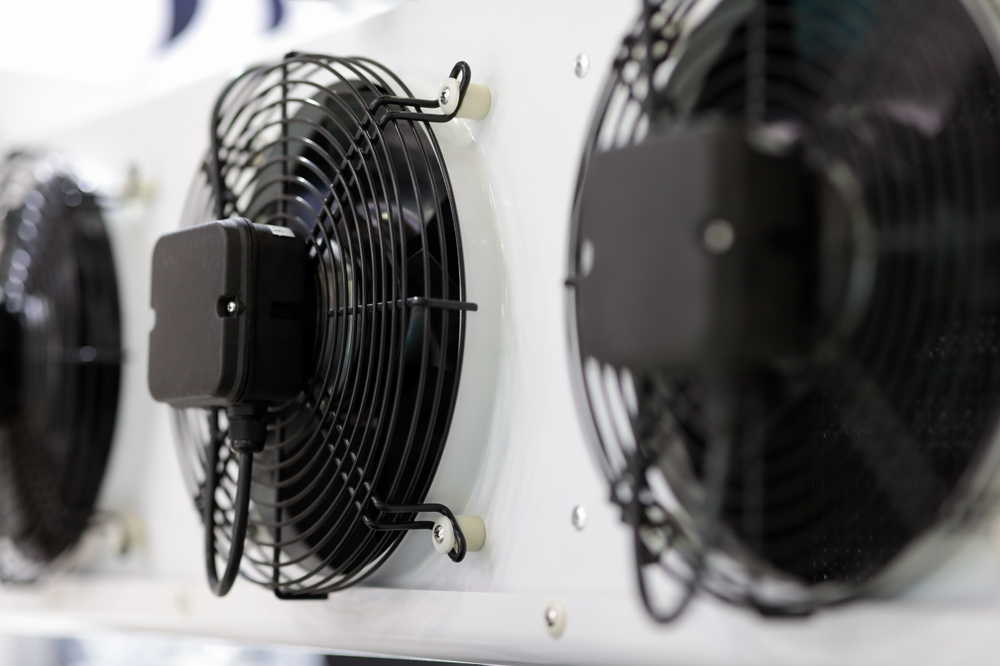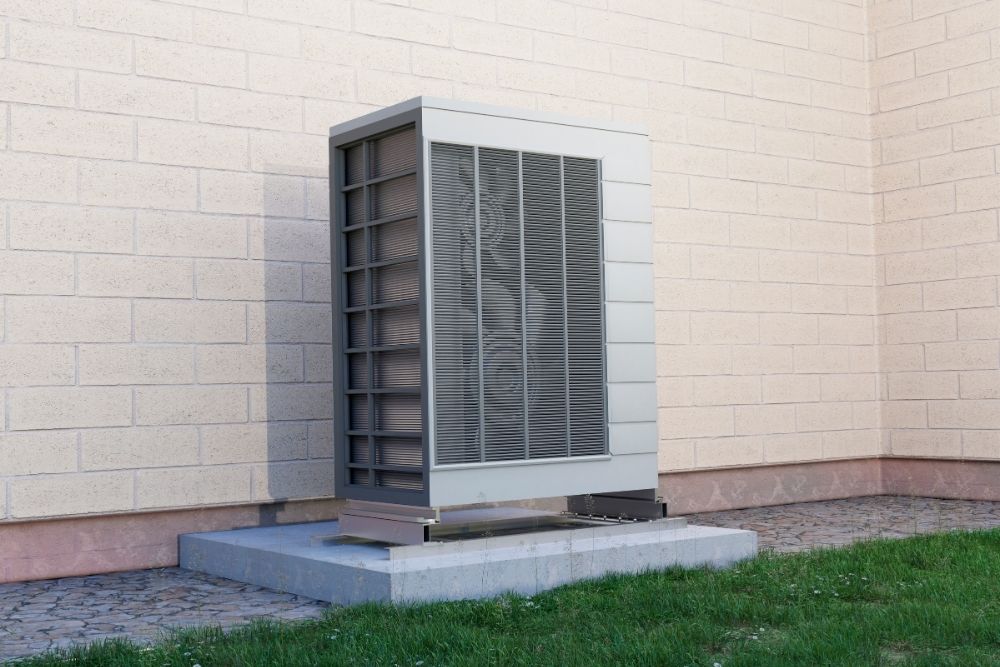
Resistance Life Enchance: Operation Maintenance and Savings Tips


Commercial condensers are considered the heart of cooling systems, removing heat from the environment to facilitate the cooling process. Typically used in commercial buildings, industrial facilities, and cold storage warehouses, these devices convert hot gas from the compressor into liquid, ensuring efficient system operation. Condensers provide energy efficiency and eco-friendly solutions, helping businesses reduce costs. Equipped with modern technologies, next-generation models offer high performance and durability. For instance, microchannel technology enhances heat transfer while reducing device size for space savings. These systems lower energy consumption, reducing businesses’ carbon footprint. Leading brands in the cooling industry ensure condensers are both environmentally friendly and cost-effective with innovative designs. Commercial condensers play a critical role in areas like food storage, pharmaceutical storage, and data centers. These devices support operational continuity while contributing to sustainability goals. With next-generation technologies, condensers are no longer just cooling components but also smart and eco-friendly solutions.
Next-generation condenser technologies are transforming the cooling industry with innovations focused on energy efficiency and sustainability. Compared to traditional models, these devices consume less energy and deliver higher performance. For example, variable-speed fans and smart control systems optimize energy use, reducing operating costs. Eco-friendly refrigerants minimize the impact of gases harmful to the ozone layer. Microchannel condensers stand out with their lighter and compact designs, increasing heat transfer efficiency. These technologies are revolutionizing commercial cooling systems. Innovations in the cooling industry make it easier for businesses to achieve both environmental and economic goals. Additionally, next-generation condensers enhance user comfort with features like noise reduction and vibration control. These devices are used in a wide range of applications, from data centers to supermarkets. Smart sensors and IoT integration enable real-time system monitoring, preventing failures. This allows businesses to achieve energy savings and long-term reliability. These innovations are driving the cooling industry toward a smarter and more eco-friendly future.
Energy efficiency is one of the most significant features of next-generation commercial condensers. These devices significantly reduce energy consumption with variable-speed compressors and optimized fan systems. Compared to traditional condensers, modern models can reduce energy use by up to 30%. Smart control systems automatically adjust operation based on environmental conditions, preventing unnecessary energy waste. For example, reducing fan speed at low temperatures saves energy. Microchannel technology delivers the same performance with less refrigerant, reducing both costs and environmental impact. Leading brands in the cooling industry develop innovative designs to enhance energy efficiency. Special coatings and high-efficiency tube designs improve heat transfer, enabling more cooling with less energy. Additionally, eco-friendly refrigerants support energy efficiency while reducing carbon emissions. These technologies help businesses lower energy bills, providing long-term savings. Ultimately, next-generation condensers offer a sustainable solution both economically and environmentally.

Sustainability is a top priority in the cooling industry today. Commercial condensers are designed to reduce environmental impact, offering businesses both a responsibility and an opportunity. Eco-friendly refrigerants protect the ozone layer while minimizing the carbon footprint. Next-generation condensers are manufactured with recyclable materials and energy-efficient designs. This reduces environmental impact during both production and operation. For example, microchannel technology delivers high performance with less material, supporting sustainability. Energy-saving smart systems help businesses meet environmental goals. The cooling industry plays a critical role in combating climate change, and sustainability is prioritized in condenser designs. Businesses investing in eco-friendly technologies comply with regulations and gain consumer trust. Sustainable condensers reduce energy costs while minimizing environmental impact. This provides significant advantages for industries like food, pharmaceuticals, and data centers. Next-generation condensers combine environmental responsibility with economic benefits.
Smart technologies are fundamentally transforming the performance of commercial condensers. IoT integration enables real-time monitoring and optimization of systems. Sensors collect data on temperature, humidity, and energy consumption, adjusting operations to meet system needs. This prevents energy waste and simplifies maintenance processes. For instance, when a fault is detected, the system automatically sends a warning, allowing issues to be resolved before they escalate. AI-supported control systems adjust fan speed or refrigerant flow based on environmental conditions, improving performance. These technologies ensure condensers are more durable and reliable. Smart systems reduce operating costs by enhancing energy efficiency. Leading brands in the cooling industry use IoT and AI to make condensers both eco-friendly and high-performing. These innovations create significant differences in energy savings and operational efficiency, especially in large-scale facilities. Smart condensers enable businesses to offer environmentally friendly and cost-effective solutions, providing a competitive edge.
Next-generation commercial condensers are designed with innovative materials to enhance performance and sustainability. Microchannel aluminum tubes offer a lighter and more efficient alternative to traditional copper tubes. These materials improve heat transfer while requiring less refrigerant. Corrosion-resistant coatings ensure condensers remain long-lasting even in harsh weather conditions. Recyclable materials are increasingly preferred in production to reduce environmental impact. For example, aluminum alloys are both lightweight and eco-friendly. Leading brands in the cooling industry use these materials to enhance energy efficiency and reduce carbon footprints. High-strength composite materials provide additional benefits like vibration and noise reduction. These innovative materials enable the production of more compact and aesthetically pleasing designs. As a result, businesses achieve environmental goals while benefiting from more durable and efficient systems. These materials are shaping the future of cooling technologies.
The Internet of Things (IoT) makes commercial condenser systems smarter and more efficient. IoT sensors continuously monitor parameters like temperature, pressure, and energy consumption, optimizing system performance. This data is transmitted to cloud-based platforms for analysis, providing businesses with real-time insights. For example, if a condenser shows an abnormal temperature increase, the IoT system sends immediate alerts, mobilizing maintenance teams. Data analytics optimize energy use, reducing costs and preventing failures. IoT integration enables remote control of condensers, offering operational convenience. Leading brands in the cooling industry leverage IoT technology to support proactive management. This is particularly critical in sensitive areas like data centers and cold storage. IoT also enhances energy efficiency, contributing to environmental sustainability. Businesses reduce maintenance costs and improve system reliability with this technology. Ultimately, IoT enables commercial condensers to achieve a smarter, more efficient, and eco-friendly future.
Commercial condensers are equipped with innovative technologies to reduce the carbon footprint. Eco-friendly refrigerants replace traditional gases harmful to the ozone layer, significantly lowering emissions. Energy-efficient designs consume less electricity, reducing carbon emissions. For example, variable-speed fans and compressors optimize energy use, minimizing environmental impact. Microchannel technology reduces carbon footprint during production by using less material and refrigerant. Leading brands in the cooling industry prioritize sustainability with recyclable materials and renewable energy integration. IoT and AI-supported systems further reduce carbon emissions by preventing energy waste. These technologies help businesses comply with environmental regulations while building an eco-friendly image. In industries like food and pharmaceuticals, low-carbon condensers offer both environmental sensitivity and cost advantages. These innovations are driving the cooling industry toward a more sustainable future.
Next-generation commercial condensers are equipped with smart technologies and innovative designs to simplify maintenance processes. IoT sensors continuously monitor system performance, detecting potential issues early and sending real-time alerts to maintenance teams. This reduces unplanned downtime and lowers operating costs. Self-diagnostic systems analyze the condenser’s condition, automatically identifying maintenance needs. For example, issues like filter blockages or refrigerant leaks are instantly reported. Modular designs allow parts to be easily replaced, shortening maintenance time. Leading brands in the cooling industry make maintenance more accessible with user-friendly interfaces and remote access capabilities. These technologies enhance operational efficiency, especially in large-scale facilities. Energy-efficient systems operate with less wear and tear, reducing maintenance frequency. As a result, next-generation condensers enable businesses to manage maintenance processes faster, more cost-effectively, and in an eco-friendly manner, extending system lifespan.
Future commercial condenser technologies will be shaped by deeper integration of AI and IoT. Smart systems will self-learn based on environmental conditions, optimizing performance. Quantum computing will accelerate complex cooling simulations, enabling more efficient designs. Biodegradable materials and zero-emission refrigerants will nearly eliminate environmental impact. Condensers powered by renewable energy sources, such as solar or wind, will reduce energy costs. Leading brands in the cooling industry are focusing on developing eco-friendly and high-performance systems. For example, 5G technology will enable faster data transfer for real-time control of IoT devices. Augmented reality (AR)-supported maintenance systems will provide technicians with real-time guidance, speeding up processes. These innovations will make condensers more compact, quieter, and energy-efficient. In the future, condensers will not only be cooling devices but also integral parts of smart cities and sustainable ecosystems.
Next-generation commercial condensers play a critical role in many industries. The food industry uses these technologies in cold storage and supermarkets to preserve product freshness. The pharmaceutical industry benefits from the high performance of condensers in storage areas requiring precise temperature control. Data centers, with their high energy consumption, rely heavily on energy-efficient condensers to reduce costs. These systems prevent server overheating while lowering energy expenses. The automotive industry uses next-generation condensers in cooling systems for electric vehicles. Commercial buildings and hospitals invest in these technologies for comfort and energy savings. Leading brands in the cooling industry offer tailored solutions, enhancing the versatility of condensers. For example, microchannel technology’s compact designs are ideal even for small-scale businesses. Sustainability and low carbon emissions help these industries meet environmental goals. Next-generation condensers drive a cross-industry revolution by improving operational efficiency and offering eco-friendly solutions.
Investing in next-generation commercial condensers offers both economic and environmental advantages for businesses. Energy efficiency, the primary appeal of these devices, can reduce energy bills by up to 30%. Smart technologies and IoT integration lower maintenance costs while extending system lifespan. Sustainability is a critical factor for businesses to meet environmental responsibilities. Eco-friendly refrigerants and recyclable materials reduce the carbon footprint, facilitating compliance with regulations. These technologies help businesses build an eco-friendly image with consumers. Leading brands in the cooling industry enhance operational efficiency with innovative designs. For example, microchannel condensers save space in facilities with their compact designs. In industries like food, pharmaceuticals, data centers, and automotive, these technologies deliver both cost savings and high performance. Next-generation condensers provide long-term return on investment while reducing environmental impact. Therefore, investing in these technologies is essential for businesses to gain a competitive edge and contribute to a sustainable future.

Fill out the form to discover the most suitable high-end products for your projects. Contact Us Now.